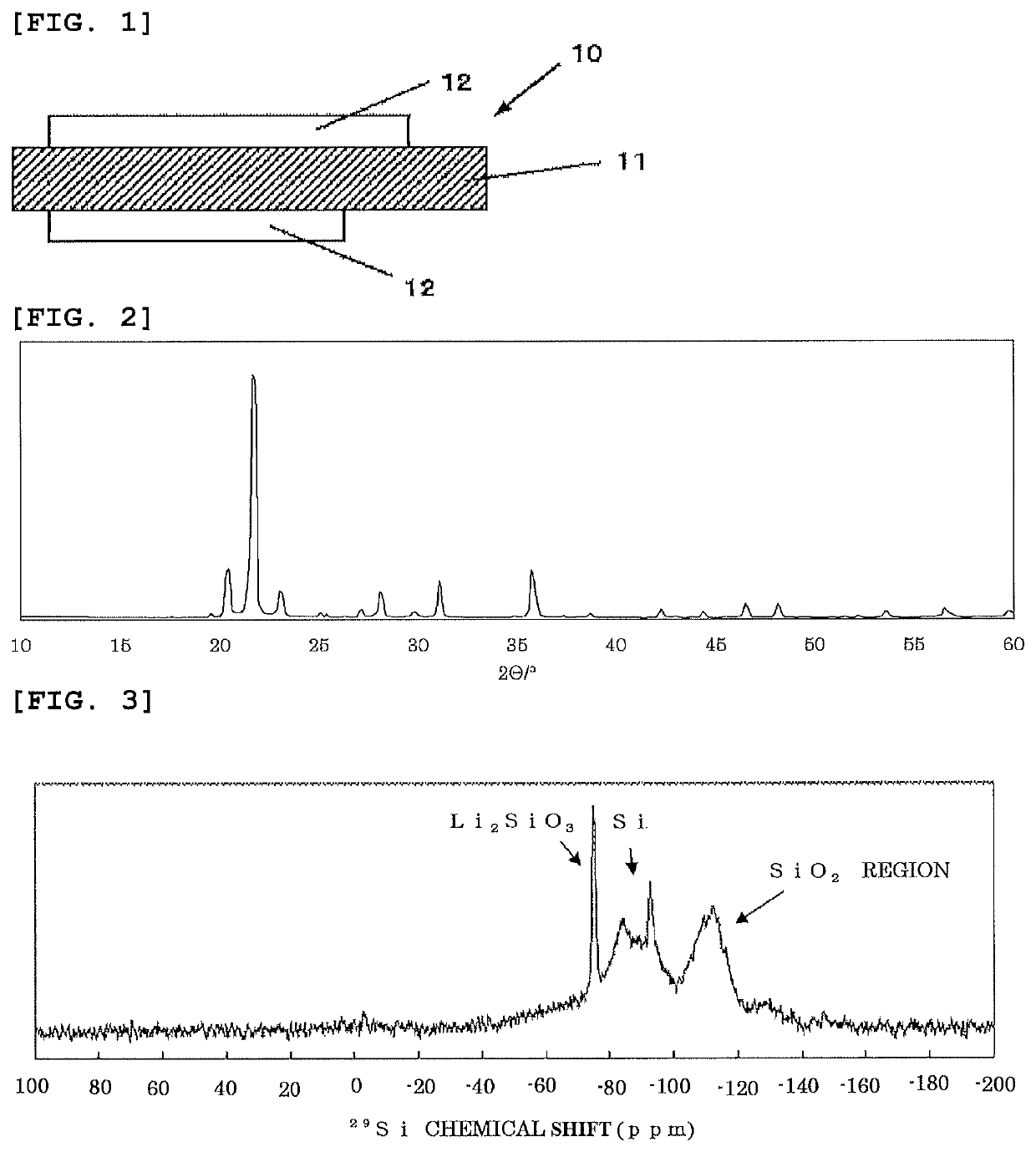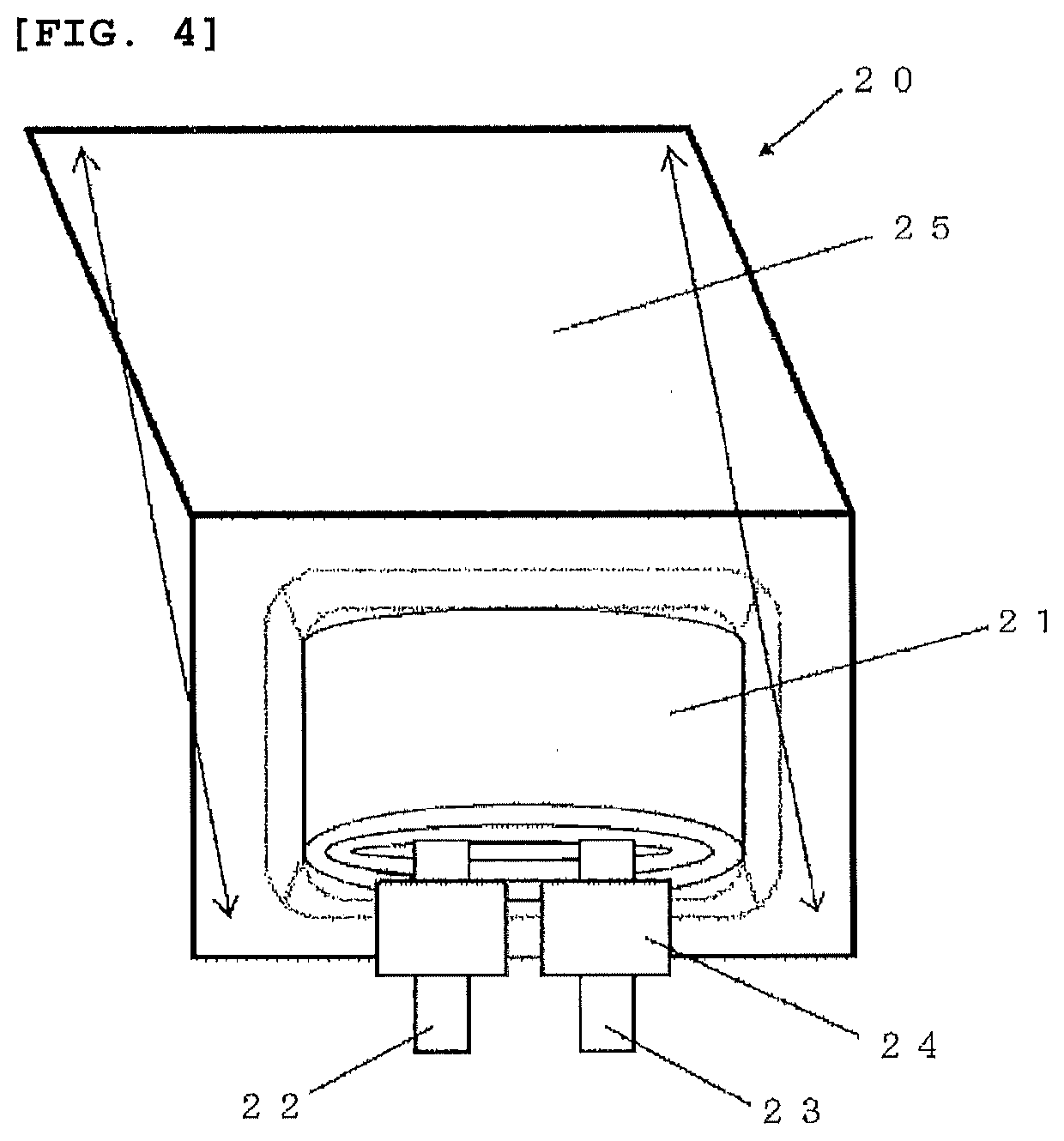Negative electrode active material, mixed negative electrode active material, aqueous negative electrode slurry composition, and method for producing negative electrode active material
- Summary
- Abstract
- Description
- Claims
- Application Information
AI Technical Summary
Benefits of technology
Problems solved by technology
Method used
Image
Examples
example 1-1
[0164]The laminate film type lithium-ion secondary battery 20 shown in FIG. 4 was prepared by the following procedure.
[0165]The procedure began with the production of a positive electrode. A positive-electrode mixture was prepared by mixing 95 mass % of LiNi0.7Co0.25Al0.05O of lithium-nickel-cobalt complex oxide as a positive electrode active material, 2.5 mass % of a positive electrode conductive assistant agent, and 2.5 mass % of a positive electrode binder (polyvinylidene fluoride: PVDF). Then, the positive-electrode mixture was dispersed in an organic solvent (N-methyl-2-pyrrolidone: NMP) to form paste slurry. The slurry was subsequently applied to both surfaces of a positive electrode current collector with a coating apparatus having a die head and dried with a drying apparatus of hot-air type. The positive electrode current collector used here had a thickness of 15 μm. The resultant was finally compressed with a roll press.
[0166]Next, a negative electrode was produced. In the ...
examples 1-2 to 1-3
, Comparative Examples 1-1, 1-2
[0179]Secondary batteries were produced as in Example 1-1, except for adjusting the oxygen amount in the bulk of the silicon compound. In these events, the oxygen amount was adjusted by changing the heating temperature or the ratio of metallic silicon and silicon dioxide in the raw material of the silicon compound. Each “x” value of the silicon compound shown by SiOx in Examples 1-1 to 1-3 and Comparative Examples 1-1 and 1-2 is shown in Table 1.
[0180]In this case, the silicon-based active material particles in Examples 1-1 to 1-3 and Comparative Examples 1-1 and 1-2 had properties as follows. In the negative electrode active material particles, the silicon compound particles contained Li2SiO3 and Li2Si2O5. Moreover, the silicon compounds each had a diffraction peak attributable to a Si(220) crystal face obtained from the X-ray diffraction, and the half value width (2θ) of the diffraction peak was 1.7°. The size of the crystallite attributable to the S...
examples 2-1 , 2-2
Examples 2-1, 2-2
[0184]Secondary batteries were prepared under the same conditions as in Example 1-2, except for changing the kind of lithium silicate to be incorporated inside the silicon compound particles as shown in Table 2. The cycle characteristics and first time efficiency were then evaluated.
PUM
 Login to View More
Login to View More Abstract
Description
Claims
Application Information
 Login to View More
Login to View More - R&D
- Intellectual Property
- Life Sciences
- Materials
- Tech Scout
- Unparalleled Data Quality
- Higher Quality Content
- 60% Fewer Hallucinations
Browse by: Latest US Patents, China's latest patents, Technical Efficacy Thesaurus, Application Domain, Technology Topic, Popular Technical Reports.
© 2025 PatSnap. All rights reserved.Legal|Privacy policy|Modern Slavery Act Transparency Statement|Sitemap|About US| Contact US: help@patsnap.com


